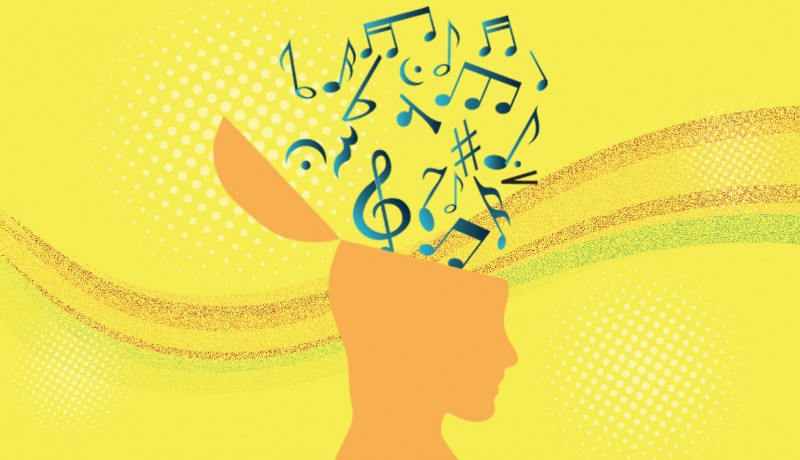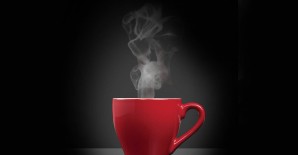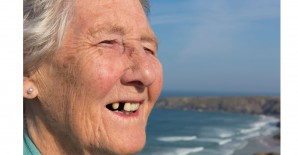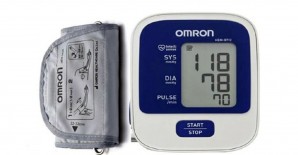
Health

Employing music for physiological and psychological wellness is slowly gaining ground in India
If music be the food of love, play on, said William Shakespeare. There are many who swear by the power of music to uplift spirits, pull them out of depression, soothe a broken heart, reduce pain, anxiety and stress, and even stimulate the regeneration of brain cells and improve memory. Whether it is Mozart’s soothing symphonies or M S Subbulakshmi’s classical renditions, music therapy is increasingly being used for healing in India.
Sixty-three year-old Jaya Nath (name changed), for instance, who suffers from hypoxic ischemic encephalopathy and is riddled with spasticity, epilepsy, cognitive issues and neurodevelopment disorders, has been undergoing music therapy for two years. Ashish Kasbe, resident music therapist at Kokilaben Dhirubhai Ambani Hospital (KDAH), who has been treating him, says, “Nath was spastic when I first met him. He had no voluntary movement and was expressionless, but when I played him a song I knew he liked, he had tears in his eyes.” Today, Nath, although insentient, can press the keys on a keyboard.
Emphasising that music on its own cannot cure brain damage as severe as suffered by Nath, Kasbe, however, points out that it can help fight depression, mood swings, mild schizophrenia, and personality disorders. “Music as a parallel therapy can do wonders by accelerating the healing process,” he says.
Similarly, T Mythilly, cognitive neuropsychologist and music therapist at Apollo Hospital, Chennai, shares the story of 61 year-old Bharati (name changed), who could not regain consciousness after undergoing coronary artery bypass graft. “She was referred to me as she was still in a state of slumber even 36 hours after the surgery. Because of music’s influence on the restromedial cortex that can bring a brain to state of alert and its ability to enhance endorphin secretion that can reduce pain and stress, Bharati convalesced rapidly and was discharged within six days.”
Indeed, music therapy as an alternative healing method is slowly and steadily catching on in India.
Understanding music therapy
Music therapy is defined by the World Federation of Music Therapy “as the professional use of music and its elements as an intervention in medical, educational, and everyday environments with… [people]… who seek to optimise their quality of life and improve their physical, social, communicative, emotional, intellectual and spiritual health and wellbeing.”
A recent study in Nature Neuroscience maintains, “Music evokes strong positively valenced experiences.” It also helps release melatonin that regulates sleep; serotonin, a neurotransmitter that aids well-being and happiness; and prolactin that mediates the formation of social bonds. Thus, music helps maintain and rehabilitate functional cognitive and sensory abilities, besides reducing the severity of some behavioural disorders. The ability of music to involve a range of abilities in human beings has been well documented (‘Listen, interpret, predict’ – see below).
Broadly, music therapy can be classified as passive and active. While passive lays stress on listening, active encourages participation. Mythilly elaborates, “Passive therapy enhances concentration and memory, reduces stress and strain, and heals a series of heart problems and hypertension. Active therapy is of immense help in neurological problems and enhances speech fluency.”
Classical cure
In fact, Indian classical music has been used since ancient times to heal the body and soul (‘Raga treatment’ – see below). The palm leaf manuscripts preserved in the Thanjavur Saraswati Mahal Library in Tamil Nadu point to the remedial use of music in psychological ailments in India.
Recently, doctors at Seth Sukhlal Karnani Memorial Hospital in West Bengal pulled a woman out of coma by playing raga Darbari Kanada. Secunderabad-based Rajam Shankar, a member of the World Federation of Music Therapy and Research, says, “Each raga is distinct in its own way and affects different areas of the brain. While some evoke emotions, others bring back memories; some even bring about revelations.” Shankar is a proponent of Carnatic music “for its perfect juxtaposition of ragas, swaras, shruti and talas allowing for a calibrated delivery”.
Meenakshi Ravi, general secretary of the Indian Music Therapy Association (IMTA), who has been practicing music therapy for 14 years, also vouches for the benefits of music as a tool for emotional catharsis. “In 2002, I used music during a group session of counselling. The response was tremendous; patients showed optimism, better retention, increased happiness, and were physically more active after that.” Since then, Ravi has been coming up with interesting and innovative methods to incorporate music into her sessions— one of which was to do a musical, prepared by her patients, highlighting their problems.
Earlier, versatile singer-composer and Oscar nominee for the score of Life of Pi , ‘Bombay’ Jayashri Ramnath, had revealed in an interview to Harmony-Celebrate Age (‘Her World of Music’) that she runs two therapy programmes for children with autism. While Manas is a group class where there is only engagement, with no expectation, Swayam is a one-on-one programme, where music is taught to the children. “We have noticed that children who are restless and a little violent calm down over a period of time. There have even been instances when children who are non-verbal—not having uttered a single word in their life—have started singing!”
Historical notes
In fact, music has been used as a therapy since time immemorial. Native Americans centred much of their healing practices on the use of chants and songs in rituals to aid the sick; Egyptians played music during childbirth. One of the oldest recorded accounts of music therapy dates back to 1078 BC when Saul, the first king of Israel, sought a skilful musician to play for him and calm down his anxiety.
Music therapy was widely prevalent in Greece as well. Greek philosopher Pythagoras studied the relationship between musical rhythm and temperament and applied musical ‘prescriptions’ according to circumstances. Plato, too, expounded the purgative effects of melodies and sounds, regarding music as a powerful tool.
That said, music therapy became a popular practice during World War II, when musicians went around hospitals to play for those suffering from physical and emotional trauma.
How it works
Studies show that music is effective in reducing anxiety and pain in patients undergoing medical and dental procedures. Researchers found that music reduced procedure time, anxiety and the amount of sedation required during colonoscopy. Most important, no harmful effects were observed. (‘Music for patients’ – see below)
In an article published by Reuters, Alexander Pantelyat, assistant professor of Neurology at John Hopkins University School of Medicine, was quoted as saying, “It’s not surprising that music therapy could help those with dementia. It is known that areas that process music in the brain overlap with the emotional areas and those that process language. If a song from somebody’s youth is played, it is possible it will bring back memories associated with the first time they heard it.”
Meanwhile, according to a paper published by the University of London titled The Role of Musical Possible Selves in Supporting Subjective Well-Being in Later Life, “For older citizens, music tends to contribute to the underlying dimensions of subjective well-being that have been identified as 1) a sense of purpose in life, 2) a sense of autonomy in goal pursuit, and 3) a sense of social affirmation, i.e. validation as a contributing member of society.”
Sounds of music
Therapists use varied approaches depending on the ability of the patient to understand music. For instance, before beginning his sessions, Kasbe does an in-depth review of the patient’s likes and dislikes and forms a pattern that will best suit their progress. Over the years, Ravi, too, has refined her process of assessing the needs of her patients, on the basis of which she decides the kind of therapy to apply. Various ways in which music can be used as therapy are:
- Background: Helps alleviate anxiety and stress. It helps patients in a critical state to relax. Can often be heard in elevators, hospitals, restaurants, etc, where it is used to induce a sense of calm.
- Contemplative: It soothes agitation and alleviates sadness. Therapists try to build a special relationship between the patient and the composer by providing different details about the composer’s music. This helps the individual appreciate the significance of music in general.
- Group: A group of people are taught how to sing or play an instrument. This kind of therapy is aimed at strengthening self-confidence and self-esteem, and is mostly used for in-house patients at hospitals.
- Creative: Individuals write songs, compose music, and play instruments as a form of catharsis. It helps them express their grief and repressed fears and feelings through songs and music.
In conclusion
Music is one of the most universal modes of therapy because of its low cost, ease of administration and minimal risk of adverse effects, as well as applicability to a range of clinical populations and age groups.
While many countries in the West are using music therapy as an integral part of treatment for various ailments, it’s still in its infancy in India, with most hospitals shying away from engaging it. However, there is definitely an upward trend towards incorporating music as a means to alleviate anxiety. Besides incorporating music therapy as a parallel means of treatment to alleviate the symptoms of depression, anxiety and general functioning, certain hospitals have started playing soothing tunes in the ICU for patients, in the waiting area for their relatives, and in the operation theatre for doctors.
Meanwhile, the Airport Authority of India is planning to roll out an exclusive radio channel for 29 airports across India to play soothing music to help passengers get over the angst of waiting at the airports.
With music’s power to restore, maintain and improve emotional, physiological and psychological wellness being recorded, it’s time for healthcare in India to sing a new tune.
—Sahil Jaswal
Raga treatment
|
| Listen, interpret, predict
Listening to music involves a range of abilities. These include:
|
Music for patients
|
February 2019
you may also like to read
-
Hot tea!
If you enjoy sipping on that steaming hot cup of tea, think twice. New research establishes a link between drinking….
-
Weight and watch
If you have stayed away from lifting weights at the gym, thinking it might not be a good idea for….
-
Toothy truth
Research has established a clear association between cognitive function and tooth loss when cognitive function score was categorised into quintiles…..
-
PRODUCT OF THE MONTH
Automatic Blood Pressure Monitor Measure your blood pressure and pulse rate with no fuss Hypertension, or high blood pressure, could….







